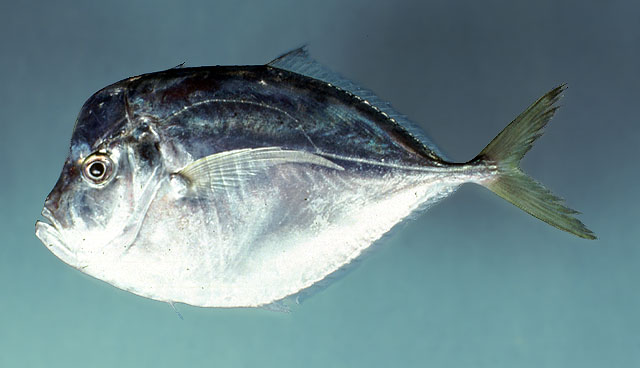| Carangidae (Jacks and pompanos), subfamily: Caranginae |
| 60 cm TL (male/unsexed); max.weight: 4,600.0 g |
|
benthopelagic; brackish; marine; depth range 0 - 55 m |
| Western Atlantic: Nova Scotia, Canada through most of the West Indies; along coasts of Gulf of Mexico and South America (Ref. 26938) to Mar del Plata, Argentina. Absent from the Bahamas (Ref. 26938). Replaced by Selene dorsalis in the eastern Atlantic. These two species have not been adequately studied and may prove to be conspecific. Known to occur in Mauritania (Ref. 5377). |
|
Dorsal spines (total): 9-9; Dorsal soft rays (total): 21-21; Anal spines: 3-3; Anal soft rays: 17-17. Pelvic fin small (Ref. 13608). A very deep-bodied, short and strongly compressed fish. Facial profile nearly vertical and concave. Pelvic fin very short (Ref. 26938). |
| Adults usually found near the bottom from inshore waters to at least 54 m depth, but may form schools near the surface (Ref. 5217). Juveniles are found on muddy bottoms brackish estuaries and in coastal marine waters (Ref. 5217). Adults feed on small fishes and crustaceans. Good food fish and marketed fresh. |
|
Least Concern (LC); Date assessed: 21 August 2012 Ref. (130435)
|
| reports of ciguatera poisoning |
|
Source and more info: www.fishbase.org. For personal, classroom, and other internal use only. Not for publication.

